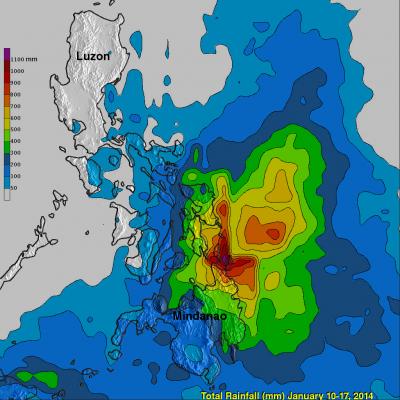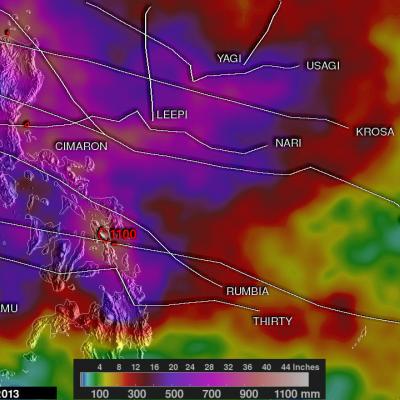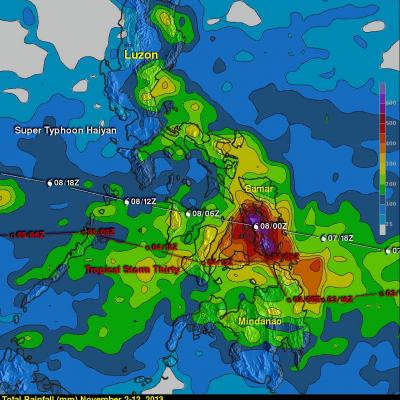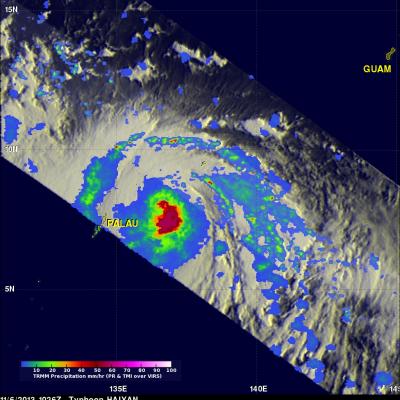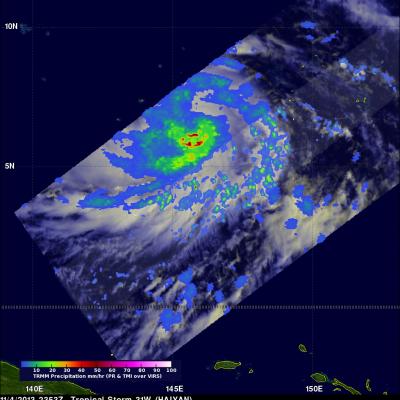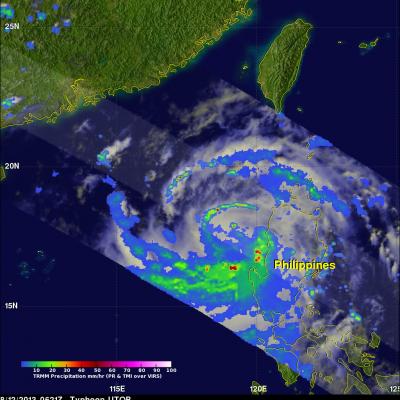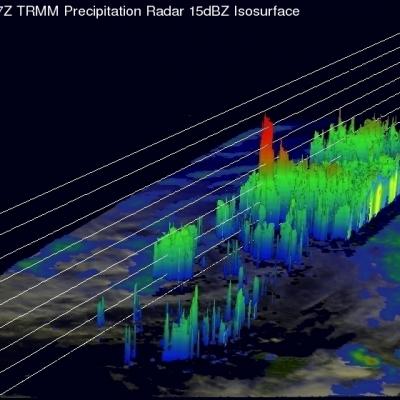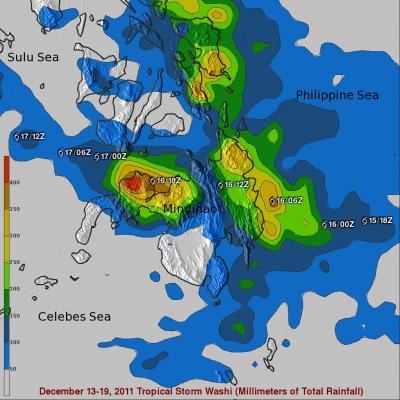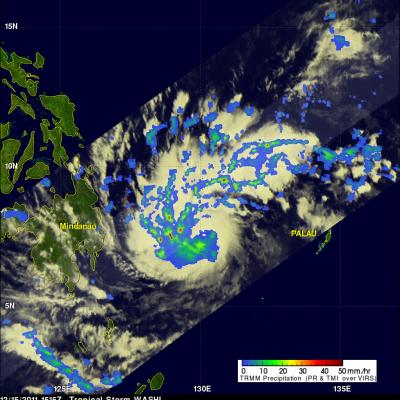Deadly Philippine Flooding And Landslides
People in the southern Philippines are used to heavy rainfall this time of the year but rainfall totals have recently been exceptionally high. A tropical low northeast of Mindanao has been an almost permanent feature on weather maps for the past week. It has caused nearly continuous rain in the area of northeastern Mindanao triggering floods and landslides that have caused the reported deaths of 34 people. The TRMM Multi-Satellite Precipitation Analysis (TMPA), produced at Goddard Space Flight Center, combines the rainfall estimates generated by TRMM and other satellites (3B42). The analysis


